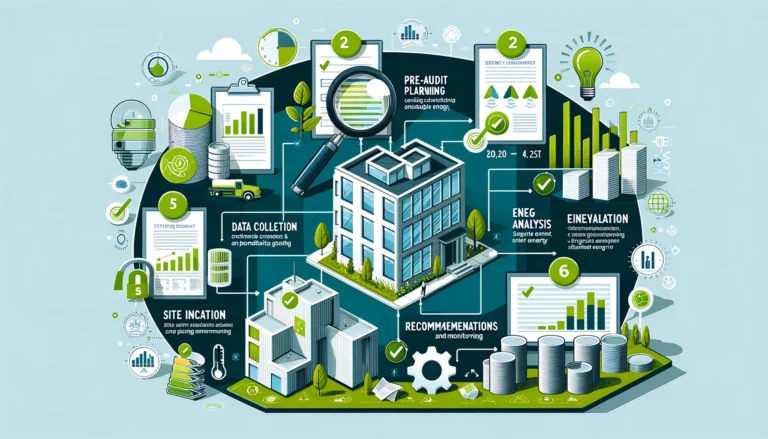In our quest for a greener planet, sustainable materials have emerged as pivotal players in reducing our environmental footprint. These responsibly sourced and processed materials play a crucial role in fostering a more sustainable future. In this comprehensive guide, we’ll delve into what makes a material sustainable, explore popular eco-friendly materials, and offer practical tips for incorporating them into everyday life.
What Makes a Material Sustainable?
Before we dive into specific examples, it’s important to understand the key characteristics that define sustainable materials. These materials typically share several common traits:
- Renewability: Materials that can be replenished naturally over a short period.
- Minimal Environmental Impact: Production processes that reduce pollution and conserve resources.
- Energy Efficiency: Reduced energy consumption during production and use.
- Recyclability: Ability to be reused or recycled at the end of their life cycle.
Popular Sustainable Materials
Let’s explore some of the most popular sustainable materials used today. Each offers unique benefits and can be incorporated into various applications, from construction to fashion.
Bamboo
Bamboo is a superstar in the world of sustainable materials. It grows incredibly fast—up to 91 cm (35 inches) per day—and doesn’t require pesticides or fertilizers. Its rapid growth makes it an excellent renewable resource. Bamboo is versatile and can be used in construction, furniture, clothing, and even as an alternative to plastic.
Recycled Steel
Using recycled steel significantly reduces the need for new iron ore mining and the energy-intensive process of steel production. Recycled steel maintains the same durability and strength as new steel, making it an ideal choice for construction projects and manufacturing.
Hemp
Hemp is another versatile and sustainable material. It grows quickly, requires little water, and improves soil health. Hemp fibers are strong and durable, making them perfect for textiles, bioplastics, and even construction materials like hempcrete.
The Role of Sustainable Materials in Construction
The construction industry is one of the largest consumers of materials and a significant contributor to global waste. By adopting sustainable materials, we can significantly reduce the environmental impact of construction projects. Here are some examples:
Green Concrete
Green concrete is made using industrial waste like fly ash, slag, and recycled concrete aggregates. This not only reduces the consumption of raw materials but also decreases greenhouse gas emissions associated with cement production.
Reclaimed Wood
Using reclaimed wood from old buildings, barns, and factories helps reduce deforestation. Reclaimed wood adds character and history to new projects while minimizing the demand for new timber.
Sustainable Materials in Everyday Products
Incorporating sustainable materials into everyday products can make a significant impact. Here are a few examples:
Clothing
Fast fashion has a massive environmental footprint, but sustainable materials like organic cotton, hemp, and recycled polyester are changing the game. These materials require less water, pesticides, and energy to produce, making them eco-friendly alternatives to conventional fabrics.
Packaging
Single-use plastic packaging is a major environmental issue. Sustainable alternatives like biodegradable plastics, recycled paper, and reusable containers are gaining popularity. These materials help reduce waste and pollution.
How to Choose Sustainable Materials
When selecting sustainable materials for any project, consider the following tips:
- Research: Understand the environmental impact of the material, including its production process and end-of-life options.
- Certifications: Look for certifications like FSC (Forest Stewardship Council) for wood products, GOTS (Global Organic Textile Standard) for textiles, and Cradle to Cradle for various products.
- Local Sourcing: Choose locally sourced materials to reduce transportation emissions.
- Longevity: Select durable materials that will last longer and require less frequent replacement.
The Future of Sustainable Materials
The future of sustainable materials is promising, with ongoing research and innovation leading to new and improved eco-friendly options. Here are some exciting developments on the horizon:
Biodegradable Plastics
Scientists are developing biodegradable plastics from natural sources like cornstarch, algae, and even waste materials. These plastics break down more quickly and safely than traditional petroleum-based plastics.
Mycelium
Mycelium, the root structure of fungi, is being used to create sustainable packaging, building materials, and even leather-like textiles. Mycelium-based products are biodegradable and have a minimal environmental footprint.
Conclusion: Embracing Sustainable Materials for a Greener Future
As we strive for a more sustainable world, embracing sustainable materials is a crucial step. By understanding the benefits and applications of these materials, we can make informed choices that reduce our environmental impact. Whether you’re embarking on a construction project, shopping for clothes, or simply choosing everyday products, opting for sustainable materials helps pave the way for a greener, more sustainable future.
Remember, every small step counts. By incorporating sustainable materials into our lives, we contribute to a healthier planet for generations to come. Let’s make conscious choices and embrace the power of sustainability.
Sustainable Materials
When it comes to sustainable materials, understanding their importance is key to making eco-friendly choices. Sustainable materials like bamboo, recycled steel, and hemp offer numerous environmental benefits. By choosing these materials, we reduce our carbon footprint and promote a healthier planet. For example, bamboo grows rapidly and requires no pesticides, making it an excellent renewable resource. Similarly, recycled steel reduces the need for new mining and conserves energy. Embracing sustainable materials in construction, fashion, and everyday products is a practical step toward a greener future. Always opt for materials that are renewable, recyclable, and have a minimal environmental impact.
By now, you should have a clear understanding of sustainable materials and their significance in promoting a sustainable future. Let’s continue to make informed, eco-friendly choices in our daily lives.





